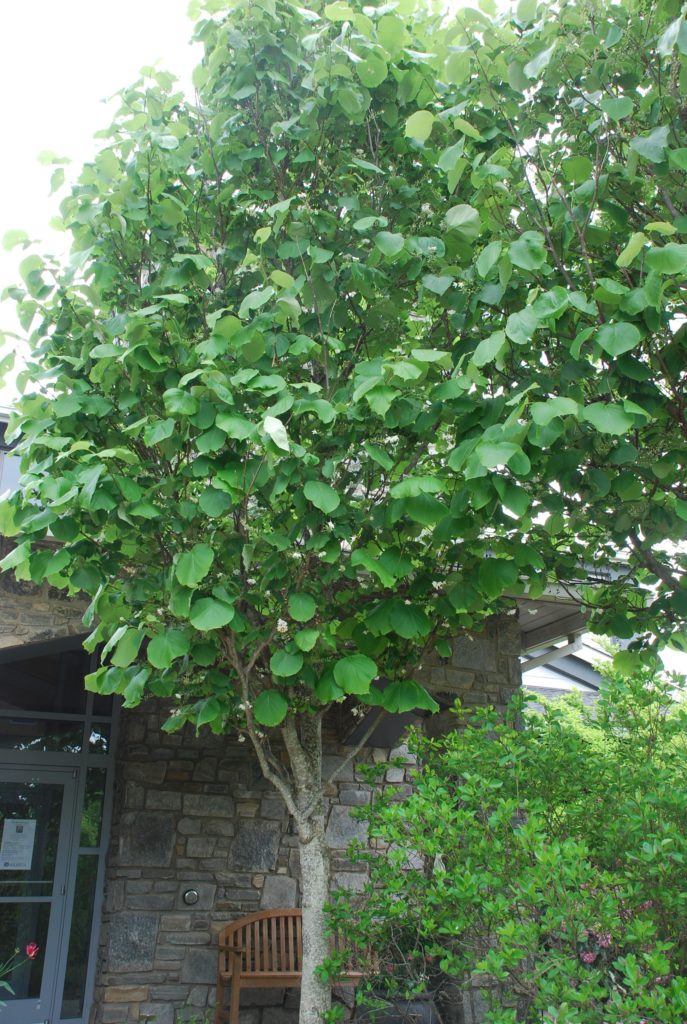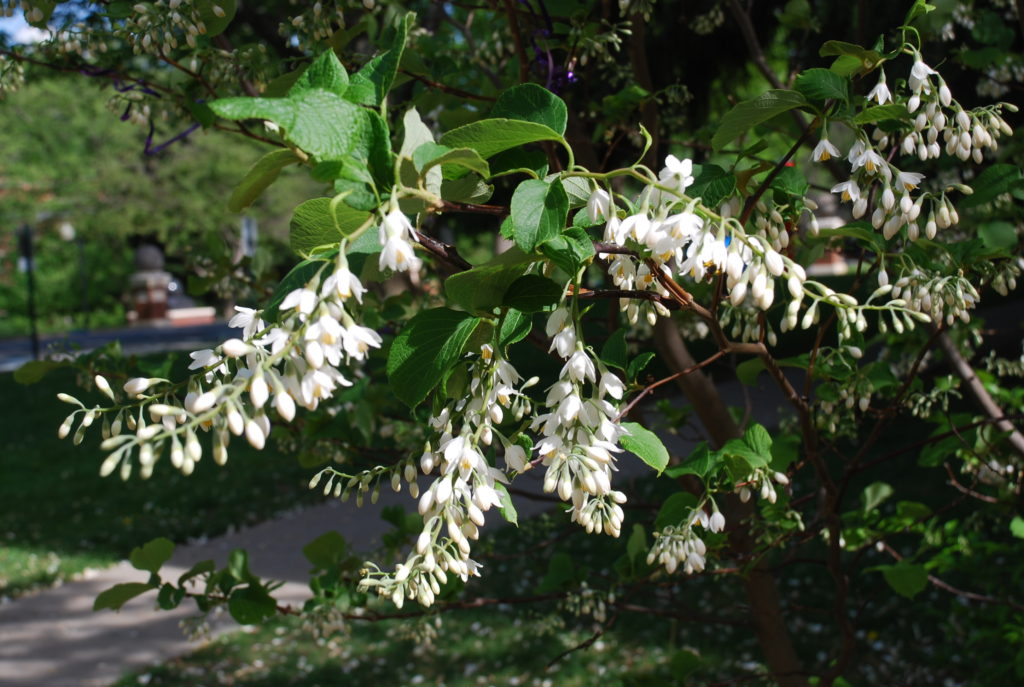
Fragrant snowbell (Styrax obassia) is a small deciduous tree or large shrub that grows 20 to 30 feet tall (15-25 feet wide). It is indigenous to Japan, Korea, and Manchuria (USDA hardiness zones 5-8). Fragrant snowbell exhibits multi-season interest: spring flowering, showy fall leaf color, and an attractive bark.
Fragrant, bell-shaped, white flowers (racemes) are borne on 4 to 8 inch long chains in mid-May. Each raceme is composed of several dozen single pendulous white flower that fall and carpet the ground. The
fragrant blooms dangle from rounded dark green foliage in late spring. Small light green ¾ inch drupe fruits ripen to dark brown and disperse the seeds in fall.

Large coarse textured ovate leaves are fully emerged and cover many of pendant flowers. Foliage is dark green with a dense pubescence (tiny hairs) on the leaf underside. Fortunately, fragrant snowbell produces loads of flowers to still offer a stunning bloom show. Leaves transition to golden yellow in autumn. Bark is smooth and the trunk becomes slightly furrowed with age.
Fragrant snowbell is best planted in full sun to partial shade and in medium moisture, acidic, compost-rich, well-drained soil. Prune in late winter to control tree shape. Old spent floral racemes and seed capsules may linger into the following spring. Styrax species are best planted in late winter into spring. No serious insect or disease problems trouble this underplanted landscape tree.
The Scott Arboretum, located on the campus of Swarthmore University, has selected fragrant snowbell as an ideal candidate for a small urban street tree. This low branched tree is also suitable for growing under utility lines and their roots will not upheave walkways and paving.

 Posted in
Posted in 
